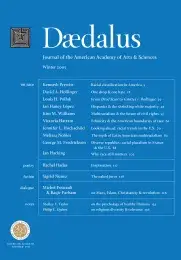Diverse republics: racial pluralism in France & the U.S.
At first glance, a comparison of French and American responses to ethnic and racial diversity may seem arbitrary and unproductive. One response emerges from an old European country with more than a thousand years of continuous existence, the other from a country formed by European settlement and then constituted as a nation scarcely two centuries ago. To avoid turning a historical comparison between France and the United States into a mere set of contrasts, it will be useful to begin with four salient similarities.
First and most obviously, both France and the United States revolted against kingly rule to establish republics in the late eighteenth century.1 In the process, they became the world’s first nation-states of substantial size based on popular sovereignty and government by consent. By abolishing or prohibiting nobility as well as monarchy, they created a presumption of legal and political equality for all citizens. The Declaration of Independence and the Déclaration des droits de l’homme et du citoyen set forth the principle that merely being human entitles individuals to basic natural rights.
The kind of nationalism that developed to defend this radical political project is usually categorized as ‘civic’ or ‘territorial,’ as opposed to the ‘ethnic’ or ‘organic’ type that developed in nineteenth-century Europe, especially in Germany.2 The civic type meant that, in theory at least, one belonged to the nation simply by being there; by contrast, membership according to the ethnic type required the right ancestry.
As Anthony D. Smith has pointed out, all nations–including France and the United States–have combined “ethnic solidarity” and “political citizenship,” albeit in differing proportions.3 Still, whatever ethnoracial identities were implicitly or explicitly privileged in the two societies, the theory promulgated to justify the revolutions was a universalistic conception of citizenship as one embodiment of human rights. At the same time, citizenship in both France and the United States was also a bounded concept. The resulting need to establish qualifications for full membership in the nation-state enabled both societies to limit civil rights according to particularistic standards involving age, gender, place of birth, and (sometimes) parentage or racial ancestry. . . .
